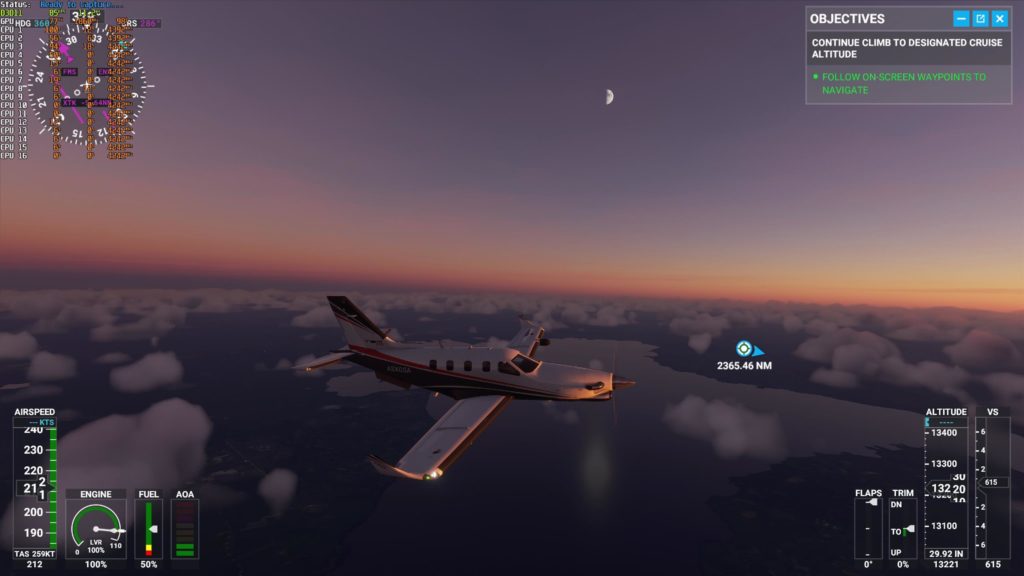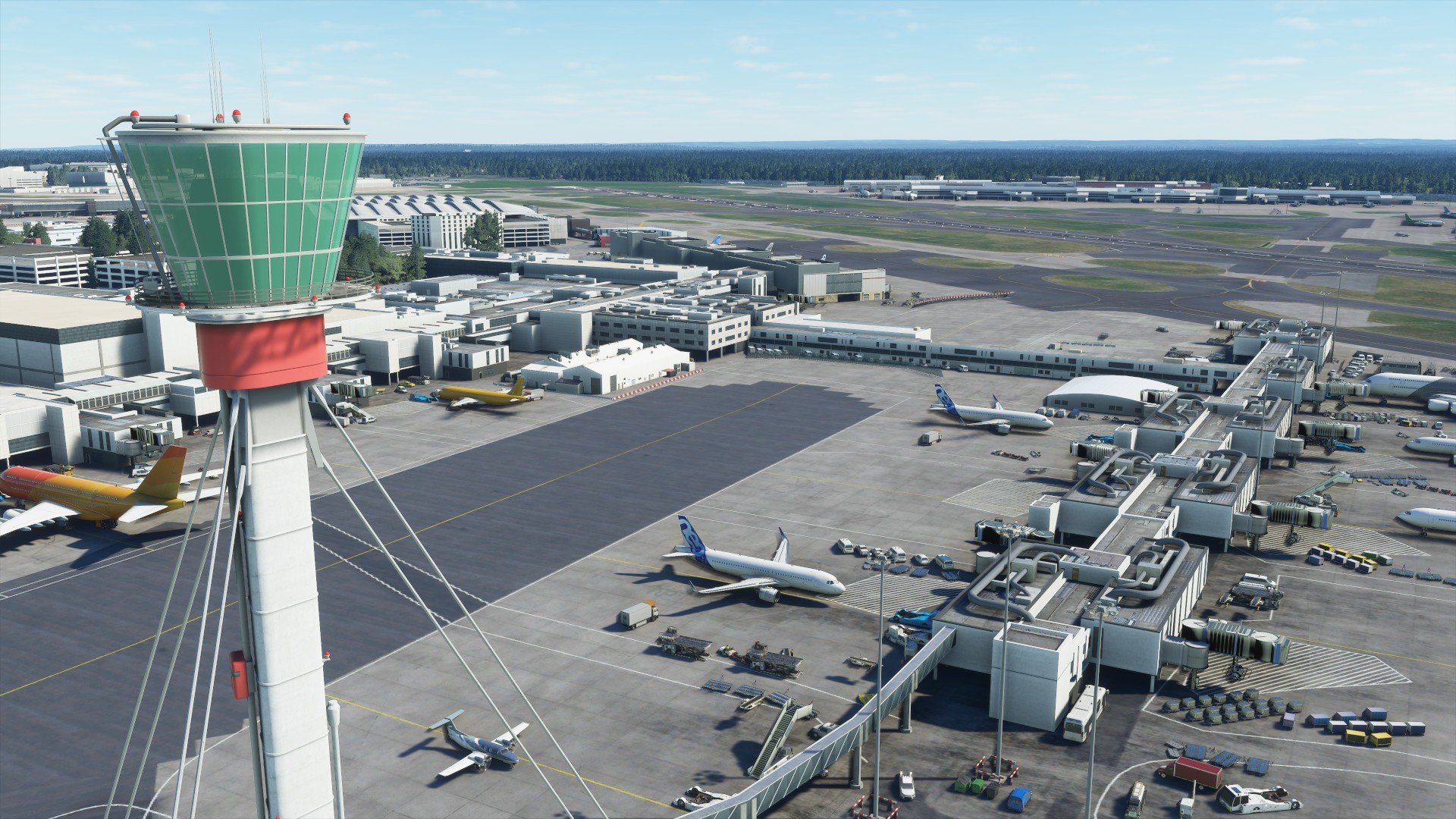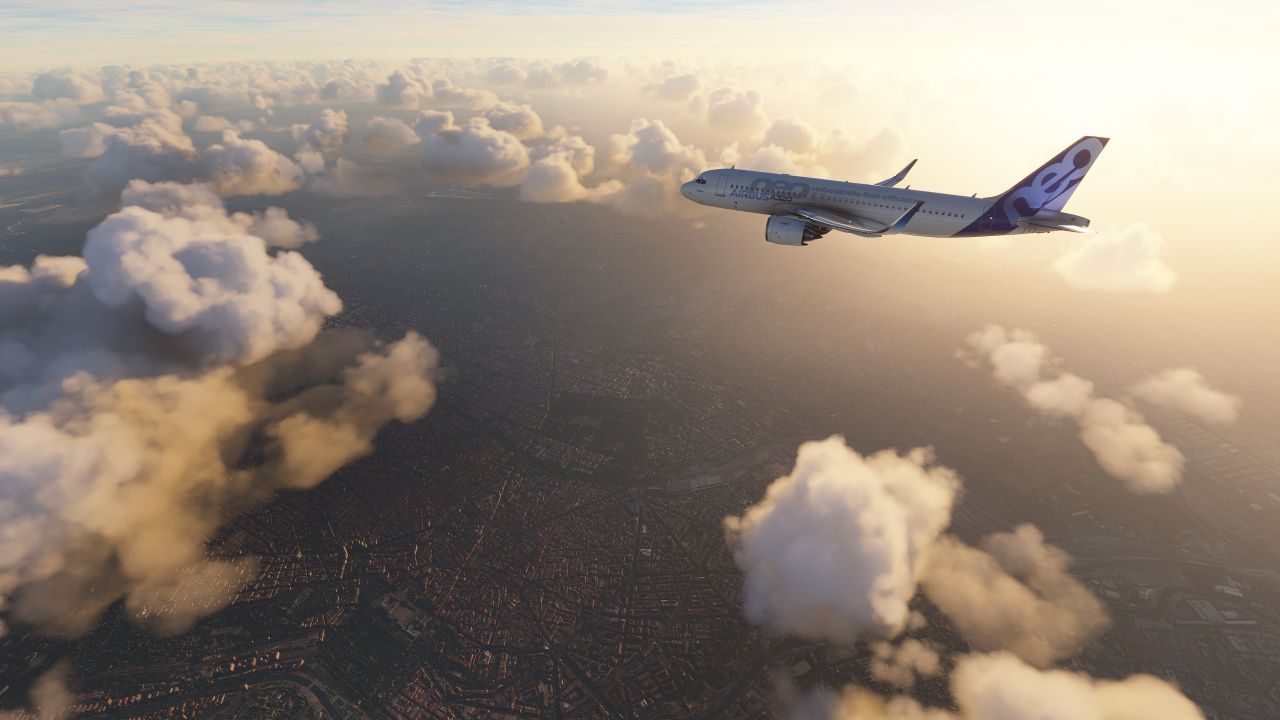Microsoft Flight Simulator review
Being able to jump into the virtual cockpit of an aircraft and fly over a faithfully recreated representation of planet Earth, complete with landmarks, cities, settlements and natural wonders, is an experience that simply doesn’t exist anywhere except in Microsoft Flight Simulator – outside of maybe touring the virtual world in Google Earth VR.
Although, that said, Google Earth is a still snapshot whereas in Flight Simulator, you’re in control, responsible for take-off, landing, and everything in-between. If you can play it, that is. And when I say that I’m not just talking about physical ability – although we’ll come to that – im actually talking about hardware. This is a PC-only title right now and it’s an intensive one at that. The initial install is over 100GB, and even with a decent PC you’ll see worryingly long load times, visual bugs, crashes here and there, and won’t get a mega high frame rate thanks to the game being CPU intensive.
That stuff aside, though, the biggest barrier to entry may simultaneously be Flight Simulator’s greatest asset: it’s dedication to realism. The brains at Asobo Studios have developed what might be the most realistic and meticulous simulation available for public consumption, which may leave some people behind as a result.

Everything here has been taken into account, weighed and measured and studiously calculated, to the point that simply learning what every key or flight stick button does will take a few goes around the tutorial lessons. It doesn’t even teach you to take-off or land in the first few sessions, but instead focuses on everything you’ll need to know about simply not crashing.
Once you have made it through the tutorials and feel confident enough to get into a plane and fly alone, you’ll continue to learn by doing for hours. You can plot a course from anywhere in the world to anywhere else by selecting airports, airfields, or runways, after which you’ll be placed in charge of your aircraft and told to simply travel.
Take-off is relatively simple, but you’ll notice almost instantly how much care and attention has gone into Flight Simulator. This is a series first introduced in 1982, and here in 2020 it has been utterly, totally refined. The sense of lift you feel as you rise into the air is simply on another level – and something that could easily have been dizzying is in fact breathtaking as you glance out of the side windows at the world below disappearing into the distance.

And what a world it is, too. Planet Earth as rendered in Microsoft Flight Simulator is spectacular, not just highly detailed but real, and whether you’re passing over verdant hillsides, ice-capped mountains, dense forest or faithfully recreated population centres, it’s never less than jaw-dropping. The fact it maintains a smooth frame rate at all is a massive boon, especially if you do lose control in those early flights and every second counts – but be warned the frame rate is not consistent, and when it drops it tanks. It’s only usually when it’s loading blocks of data, and often its when everything else is otherwise serene – or at least, that’s how it was for me.
Weirdly, much of your time each journey will be spent doing very little, course correcting here and there maybe, but mostly sightseeing and taking in the gorgeous visuals. When you get too close to the surface, some of those visuals can suffer a little (cities and towns in particular show the cracks in the game’s facade when viewed up close), but for the majority of your time you won’t be close enough to the ground to worry. While flights are in real time, you can skip long sections of the journey with a feature called “Travel To”, that prevents you having to literally sit for hours as you cross an ocean.
I’ll be honest though: it takes some time to get to a truly comfortable point. Even playing with a Thrustmaster Airbus Flight Stick, I had to reduce the sensitivity of the yoke by a fair amount, and I just couldn’t get to grips with using the keyboard for steering. This brought its own downsides, though, as the button-mapping was out and no amount of changing and saving profiles in the settings would lock in a control scheme I wanted. In the end I kind of used a hybridised control scheme which wasn’t perfect and certainly impacted my experience.

But despite Flight Simulator becoming a little more accessible with every hour spent in the cockpit, it’s not kind to newcomers, and anyone going in not fully prepared for a hardcore simulation of flying is in for a rude awakening. There’s no arcade-like handling, no gratuitous explosions if you dip into the floor or a mountainside, no rewinds or continues. It’s easy to oversteer and then overcompensate, find yourself in a tailspin and stall – at which point it’s difficult not to panic, especially if you’re still new to the experience and can’t remember where half the buttons are. It took a long time for me to find the game fun, and even once it clicked I struggled to fully relax while playing.
But then, I’ll freely admit to not being the target audience here. I’m a gamer who plays an awful lot of games, but this isn’t just another AAA blockbuster. Microsoft Flight Sim is for the hardcore, for the people who already own flight sticks and whose PCs are powerful enough to wring the most out of the software. I’m not saying more casual adopters won’t enjoy it, but anyone coming to the series for the first time in 2020 or beyond will likely struggle for a few hours at the very least. Stick with it though, and you’ll find an experience like nothing else you’ve ever played.




